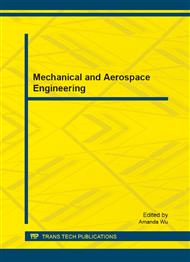p.267
p.273
p.279
p.284
p.288
p.292
p.299
p.305
p.310
Study of Numerical Evaluation about Kinestate of Mixed Particles in Rectilinear-Flow Pneumatic Conveyance
Abstract:
The effect of rectilinear-flow upon kinestate of particles had been investigated by numerical calculation about mixed particle swarm in the process of pneumatic conveyance. The effect of kinestate upon pressure loss, particles position and velocity has been analyzed. The air velocity is 20m/s, and the length of the pipe is 4m. It was found that most particles are accumulated at the bottom of the pipe, and particles velocity tends to stabilize at the top. Stopping would probably be formed at the bottom if the energy of air stream is not enough. In addition, bottom of pipe exceeds top in the number of collision between particles because of the accumulation of particles, so pressure loss at the bottom is much more than that of the top.
Info:
Periodical:
Pages:
288-291
Citation:
Online since:
November 2012
Authors:
Price:
Сopyright:
© 2012 Trans Tech Publications Ltd. All Rights Reserved
Share:
Citation:


